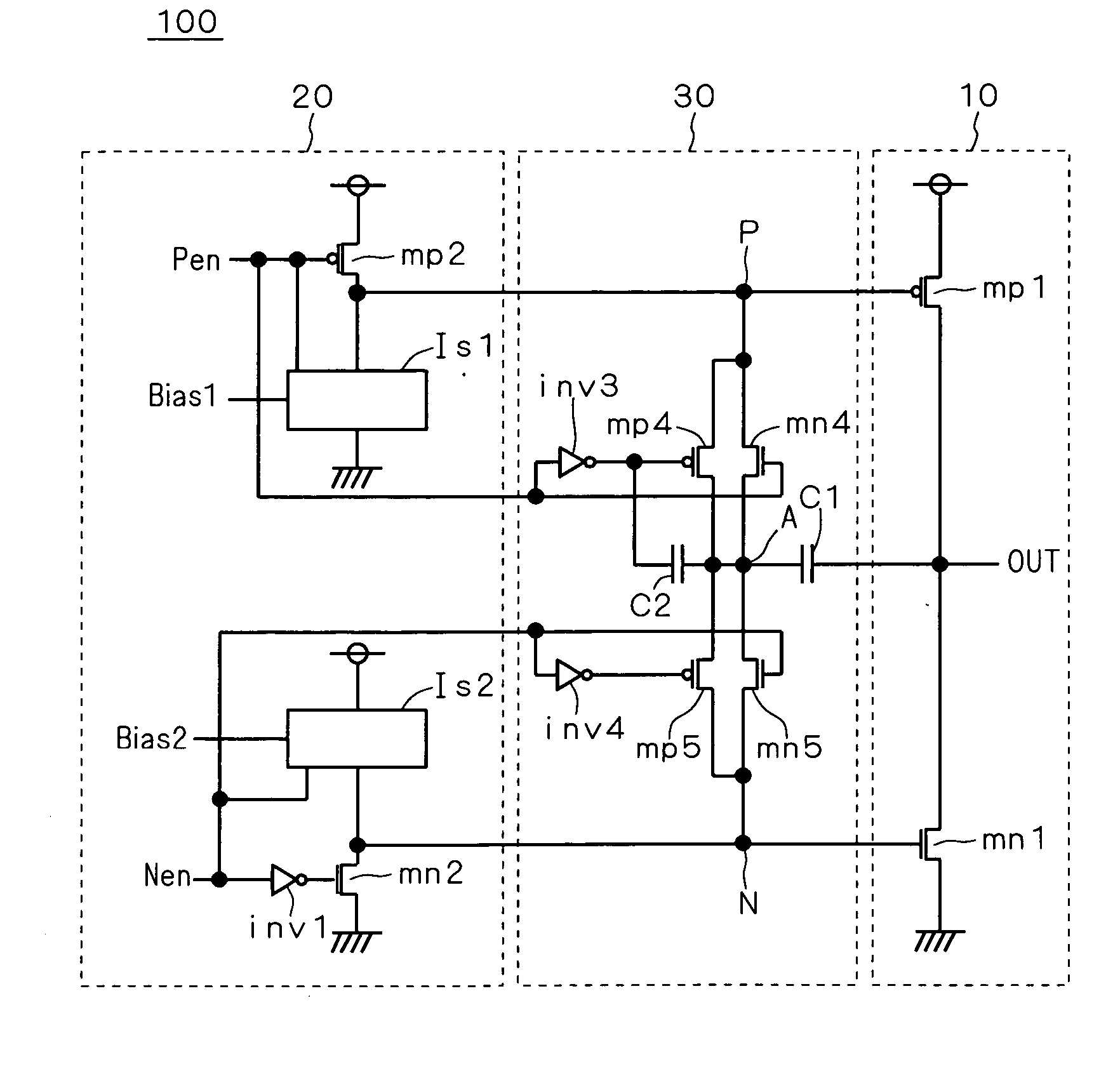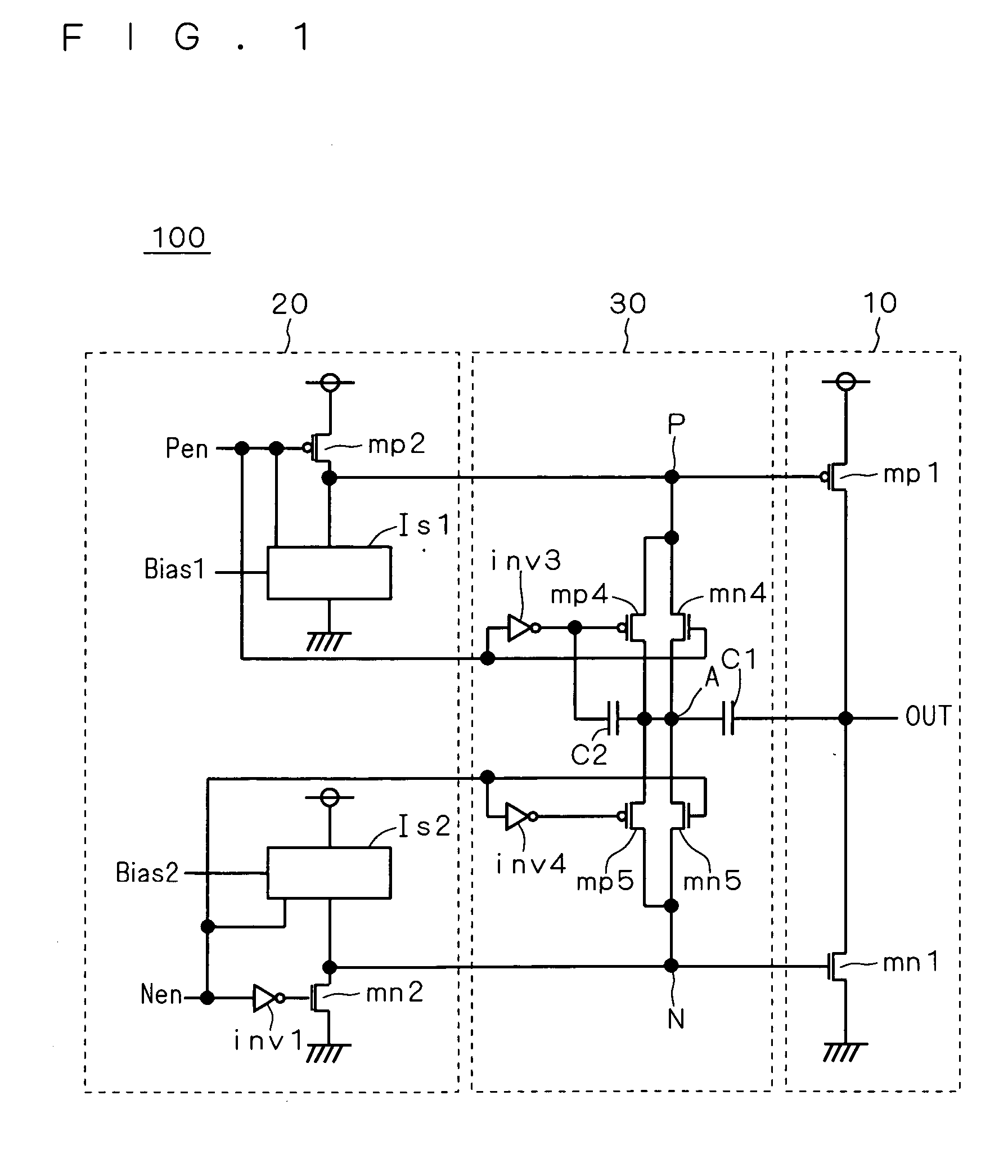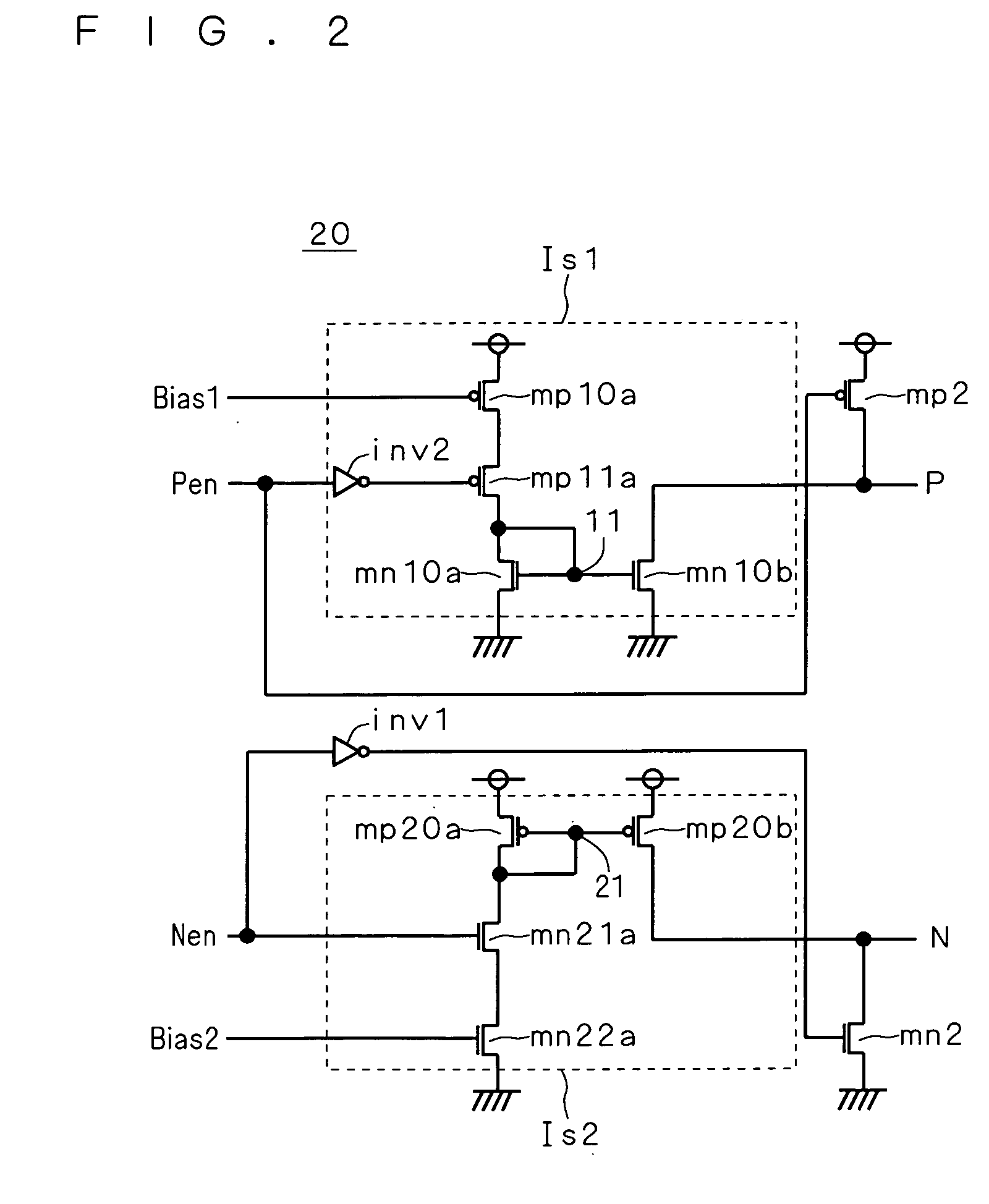Output buffer circuit
a buffer circuit and output technology, applied in the field of output buffer circuits, can solve the problems of change in output delay and increase in delay, and achieve the effect of reducing output delay
- Summary
- Abstract
- Description
- Claims
- Application Information
AI Technical Summary
Benefits of technology
Problems solved by technology
Method used
Image
Examples
Embodiment Construction
[0030]
[0031]FIG. 1 shows a circuit diagram of the structure of a slew-rate controlled output buffer circuit 100 according to a first preferred embodiment. As shown, the output buffer circuit 100 includes a driver circuit 10, a driver control circuit 20 for controlling the driver circuit 10, and a capacitor circuit 30 interposed between the driver circuit 10 and the driver control circuit 20 for controlling a slew rate. FIG. 2 shows a circuit diagram of a detailed structure of the driver control circuit 20 shown in FIG. 1.
[0032] As shown in FIG. 1, the driver circuit 10 includes a PMOS transistor mp1 and an NMOS transistor mn1. The driver control circuit 20 includes constant current sources Is1 and Is2, a PMOS transistor mp2, an NMOS transistor mn2, and an inverter inv1. The capacitor circuit 30 includes capacitors C1 and C2, inverters inv3 and inv4, PMOS transistors mp4 and mp5, and NMOS transistors mn4 and mn5.
[0033] As shown in FIG. 2, the constant current source Is1 includes PM...
PUM
 Login to View More
Login to View More Abstract
Description
Claims
Application Information
 Login to View More
Login to View More - R&D
- Intellectual Property
- Life Sciences
- Materials
- Tech Scout
- Unparalleled Data Quality
- Higher Quality Content
- 60% Fewer Hallucinations
Browse by: Latest US Patents, China's latest patents, Technical Efficacy Thesaurus, Application Domain, Technology Topic, Popular Technical Reports.
© 2025 PatSnap. All rights reserved.Legal|Privacy policy|Modern Slavery Act Transparency Statement|Sitemap|About US| Contact US: help@patsnap.com



